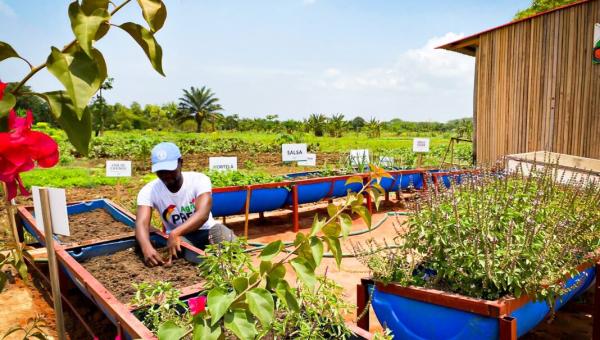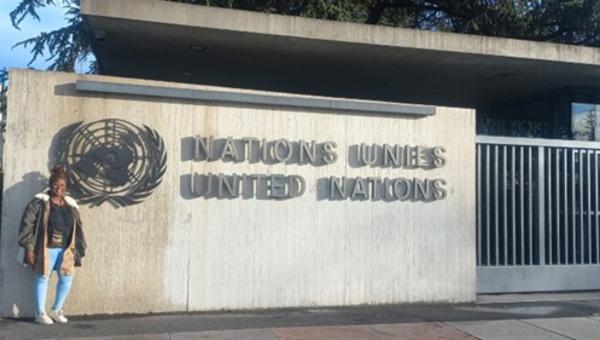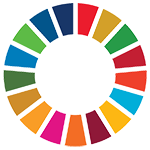
Sustainable Development Goals
What are the SDGs?
The Sustainable Development Goals (SDGs), also known as Global Goals, were adopted by United Nations member countries in 2015 as a universal call to action to end poverty, protect the planet, and ensure that by 2030 all people enjoy peace and prosperity.
The 17 SDGs are integrated—they recognize that action in one area will affect outcomes in others, and that development must balance social, economic, and environmental sustainability.
Countries have committed to prioritizing progress in a way that leaves no one behind. The SDGs are designed to end poverty, hunger, AIDS, and discrimination against women and girls.
The creativity, knowledge, technology, and financial resources of the whole society are needed to achieve the SDGs in all contexts.
In a scenario where the COVID-19 pandemic has intensified global inequalities, the 2030 Agenda and its SDGs remain the way forward not only toward recovery but toward rebuilding a better world, leaving no one behind.
Goal 1
No Poverty
Eradicating poverty in all its forms remains one of humanity's greatest challenges. Although the number of people living in extreme poverty fell by more than half between 1990 and 2015, many still struggle to meet their most basic needs.
In 2015, around 736 million people still lived on less than US$1.90 a day; many lacked food, clean water, and sanitation. Rapid economic growth in countries such as China and India has lifted millions out of poverty, but progress has been uneven. Women are more likely to be poor than men because they have less access to paid work, education, and property.
Progress has also been limited in other regions, such as South Asia and Sub-Saharan Africa, which account for 80% of people living in extreme poverty. New threats brought on by global climate change, conflict, and food insecurity mean that even more work is needed to lift people out of poverty.
The SDGs are a bold commitment to finish what we started and end poverty in all its forms and dimensions by 2030. This includes targeting the most vulnerable, increasing access to basic resources and services, and supporting communities affected by conflict and climate-related disasters.
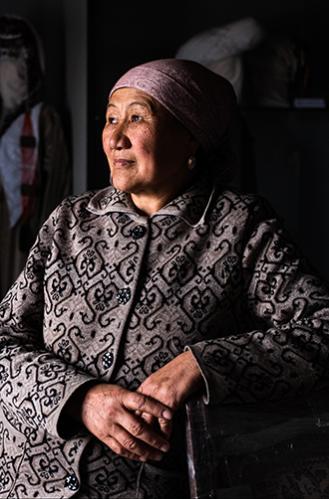
736
millions
people still live in extreme poverty
10
%
of the global population lives in extreme poverty, compared to 36% in 1990.
1.3
billion
people live in multidimensional poverty
SDG Goal Targets:
- By 2030, halve the proportion of men, women, and children of all ages living in poverty in all its dimensions according to national definitions.
- Implement nationally appropriate social protection systems and measures for all, and by 2030 ensure that a substantial proportion of the poor and vulnerable are covered.
- Ensure, by 2030, that all men and women, in particular the poorest and most vulnerable, have equal access to economic resources, as well as to basic services, ownership and control over land and other forms of property, inheritance, natural resources, new technologies, and financial services, including microfinance.
- By 2030, build the resilience of the poorest and those in vulnerable situations and reduce their exposure and vulnerability to extreme weather-related events and other economic, social and environmental shocks and disasters.
- Ensure the significant mobilization of resources from a variety of sources, including through development cooperation, to provide adequate and predictable means for developing countries, in particular the least developed countries, to implement programs and policies to end poverty in all its dimensions.
- Create sound policy frameworks at the national, regional, and international levels, based on pro-poor development strategies that take gender issues into account, to support accelerated investment in poverty eradication actions.
SDG in Action
Goal 2
Zero Hunger
The number of undernourished people has fallen by almost half in the last two decades due to rapid economic growth and increased agricultural productivity. Many developing countries that used to have high rates of hunger can now meet the nutritional needs of their populations. Central and East Asia, Latin America, and the Caribbean have made great strides in eradicating hunger.
Unfortunately, hunger and malnutrition remain a huge barrier to development in many countries. An estimated 821 million people were chronically undernourished in 2017, often as a direct consequence of environmental degradation, drought, and biodiversity loss. More than 90 million children under the age of 5 were dangerously underweight. Malnutrition and severe food insecurity appear to be on the rise in almost all regions of Africa, as well as South America.
The SDGs aim to end all forms of hunger and malnutrition by 2030, ensuring that all people—especially children—have sufficient and nutritious food throughout the year. This involves promoting sustainable agriculture, supporting smallholder farmers, and ensuring equal access to land, technology, and markets. It also requires international cooperation to secure investments in infrastructure and technology to improve agricultural productivity.
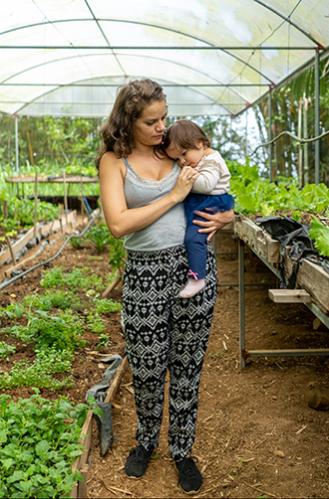
821
millions
was the number of undernourished people in 2017
63
%
In 2017, Asia accounted for approximately two-thirds, or 63%, of world hunger.
22
%
Approximately 151 million children under the age of 5, or 22%, were stunted in 2017.
Goal Targets:
- By 2030, end all forms of malnutrition, including achieving, by 2025, the internationally agreed targets for reducing stunting and wasting among children under 5 years of age, and addressing the nutritional needs of adolescent girls, pregnant and lactating women, and older persons.
- By 2030, double the agricultural productivity and incomes of small-scale food producers, in particular women, indigenous peoples, family farmers, pastoralists, and fishers, including through secure and equal access to land; other productive resources and inputs; knowledge; financial services; markets and opportunities for value addition; and non-farm employment.
- By 2030, ensure sustainable food production systems and implement resilient agricultural practices that increase productivity and production, help maintain ecosystems, strengthen the capacity to adapt to global climate change, extreme weather, drought, flooding, and other disasters, and progressively improve land and soil quality.
- By 2020, maintain the genetic diversity of seeds, cultivated plants, and farmed and domesticated animals and their related wild species, including through well-managed and diversified seed and plant banks at the national, regional, and international levels, and share the benefits arising from the use of genetic resources and associated traditional knowledge, as internationally agreed.
- Increase investment, including through international cooperation, in rural infrastructure, agricultural research and extension services, technology development, and plant and animal gene banks, in order to increase agricultural productive capacity in developing countries, particularly in least developed countries.
- Correct and prevent trade restrictions and distortions in world agricultural markets, including through the elimination of all forms of agricultural export subsidies and all export measures with equivalent effect, per the mandate of the Doha Round.
- Take measures to ensure the proper functioning of markets for food commodities and their derivatives and facilitate timely access to market information, including on food stocks, in order to help limit food price volatility.
SDG in Action
Goal 3
Health and Wellbeing
There has been significant progress in relation to the leading causes of death and disease worldwide. Life expectancy has increased dramatically; infant and maternal mortality rates have declined, we have turned the tide on HIV, and deaths from malaria have fallen by half.
Good health is essential for sustainable development, and the 2030 Agenda reflects this interconnectivity. It takes into account rising economic and social inequalities, rapid urbanization, threats to the climate and the environment, the ongoing response to HIV and other infectious diseases, and emerging challenges such as noncommunicable diseases. Universal health coverage will be essential to achieving SDG 3, ending poverty, and reducing inequalities. Other emerging global health priorities not explicitly included in the SDGs, including antimicrobial resistance, also require action.
But the world is off track to achieve the health-related SDGs. Progress has been uneven, both between and within countries. There is a 31-year gap between nations with the shortest and longest life expectancies. And while some have made impressive gains, national averages hide the fact that many are being left behind. Multisectoral, rights-based, and gender-sensitive approaches are essential to address inequalities and build good health for all.
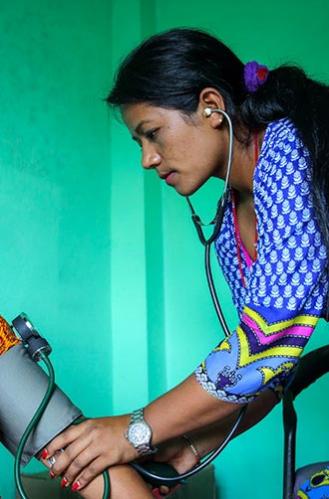
400
millions
At least 400 million people lack access to basic healthcare, and 40% lack access to social protection.
1.6
billion
More than 1.6 billion people live in vulnerable situations, where protracted crises combined with weak capacity to deliver basic health services pose a significant challenge to global health.
15
millions
By 2017, 21.7 million people living with HIV were receiving antiretroviral therapy. Even so, more than 15 million people were still waiting for treatment.
Metas do ODS:
- By 2030, reduce the global maternal mortality ratio to less than 70 per 100,000 live births.
- By 2030, end preventable deaths of newborns and children under 5 years of age, with all countries reducing neonatal mortality to 12 per 1,000 live births and under-5 mortality to 25 per 1,000 live births.
- By 2030, end epidemics of AIDS, tuberculosis, malaria and neglected tropical diseases and combat hepatitis, waterborne diseases and other communicable diseases.
- By 2030, reduce by one third premature mortality from non-communicable diseases through prevention and treatment and promote mental health and well-being.
- Strengthen the prevention and treatment of substance abuse, including narcotic drug abuse and the harmful use of alcohol.
- By 2020, halve the number of global deaths and injuries from road traffic accidents.
- By 2030, ensure universal access to sexual and reproductive health-care services, including for family planning, information and education, and the integration of reproductive health into national strategies and programs.
- Achieve universal health coverage, including protection against financial risks, access to quality essential health services, and access to essential, safe, effective, quality, and affordable medicines and vaccines for all.
- By 2030, substantially reduce the number of deaths and illnesses from hazardous chemicals, pollution, and contamination of air, water, and soil.
- Strengthen the implementation of the World Health Organization Framework Convention on Tobacco Control in all countries, as appropriate.
- Support research and development of vaccines and medicines for communicable and non-communicable diseases that primarily affect developing countries; Ensure access to essential medicines and vaccines at affordable prices, in accordance with the Doha Declaration on the TRIPS Agreement and Public Health, which affirms the right of countries to make full use of the provisions of the Agreement on Trade-Related Aspects of Intellectual Property Rights on flexibilities to protect public health and, in particular, to ensure access to medicines for all.
- Substantially increase health financing and the recruitment, development, training, and retention of the health workforce in developing countries, especially in the least developed countries and small island developing states.
- Strengthen the capacity of all countries, particularly developing countries, for early warning, risk reduction, and management of national and global health risks.
SDG in Action
Goal 4
Quality Education
Since 2000, there has been tremendous progress toward achieving the goal of universal primary education. The total enrollment rate in developing regions reached 91% in 2015, and the global number of out-of-school children has fallen by almost half. There has also been a dramatic increase in literacy rates, and many more girls are in school. This is a remarkable achievement.
But progress has been difficult in some developing regions with high levels of poverty, armed conflict, and other emergencies. In Western Asia and North Africa, ongoing armed conflict has led to an increase in the number of children out of school. This is a worrying trend. Although Sub-Saharan Africa has made the most progress in primary school enrollment among all developing regions—from 52% in 1990 to 78% in 2012—large disparities remain. Children from the poorest families are up to four times more likely not to attend school than those from the richest families. Disparities between rural and urban areas also remain high.
Achieving inclusive and quality education for all reaffirms the belief that education is one of the most powerful and proven vehicles for sustainable development. This goal ensures that all girls and boys complete free primary and secondary education by 2030. It also aims to provide equal access to affordable vocational training, eliminate gender and wealth disparities, and achieve universal access to quality higher education.

91
%
Enrollment in primary education in developing countries reached 91%
57
millions
Even so, 51 million children of primary school age remain without education.
1
in 4
is out of school, in developing countries
SDG Goal Targets
- By 2030, ensure that all girls and boys complete free, equitable and quality primary and secondary education leading to relevant and effective learning outcomes.
- By 2030, ensure that all girls and boys have access to quality early childhood development, care and pre-primary education so that they are ready for primary education.
- By 2030, ensure equal access for all women and men to affordable and quality technical, vocational, and tertiary education.
- By 2030, substantially increase the number of youth and adults who have relevant skills, including technical and vocational skills, for decent employment and entrepreneurship.
- By 2030, eliminate gender disparities in education and ensure equal access to all levels of education and vocational training for the most vulnerable, including persons with disabilities, indigenous peoples, and children in vulnerable situations.
- By 2030, ensure that all youth and a substantial proportion of adults, both men and women, achieve literacy and numeracy.
- By 2030, ensure that all learners acquire the knowledge and skills needed to promote sustainable development, through education for sustainable development and sustainable lifestyles, including access to human rights, gender equality, a culture of peace and non-violence, citizenship, and cultural diversity and culture for sustainable development.
- Build and upgrade educational facilities that are age-, disability-, and gender-sensitive and provide safe, non-violent, inclusive, and effective learning environments for all.
- By 2020, globally expand the number of scholarships available to developing countries, in particular least developed countries, small island developing States and African countries, for enrolment in higher education, including vocational training and information and communications technology, technical, engineering and scientific programs, in developed countries and other developing countries.
- By 2030, substantially increase the supply of qualified teachers, including through international cooperation for teacher training in developing countries, especially least developed countries and small island developing States.
SDG in Action
Goal 5
Gender Equality
Ending discrimination against women and girls is not only about ensuring a basic human right, it is crucial for a sustainable future; it has been proven that empowering women and girls helps economic growth and development.
The UNDP has placed gender equality at the center of its work and has seen remarkable progress over the past 20 years. There are more girls in school now than there were 15 years ago, and most regions have achieved gender parity in primary education.
But while there are more women than ever in the labor market, there are still major inequalities in some regions, with women being systematically denied their labor rights. Sexual violence and exploitation, the unequal division of unpaid care and domestic work, and discrimination in public office remain huge barriers. Global climate change and disasters continue to have a disproportionate effect on women and children, as do conflicts and migration.
It is vital to give women equal rights to land and property, sexual and reproductive health, technology, and the internet. Today, there are more women in public office than ever before, but encouraging more women leaders will help achieve greater gender equality.

77
cents
Women receive only 77 cents for every dollar earned by men for doing the same work.
1
in 3
35% of women have experienced physical and/or sexual violence
13
%
Women represent only 13% of agricultural landowners
SDG Goal Targets:
- End all forms of discrimination against all women and girls everywhere.
- Eliminate all forms of violence against all women and girls in the public and private spheres, including trafficking and sexual exploitation and other crimes.
- Eliminate all harmful practices, such as child, early, and forced marriage and female genital mutilation.
- Recognize and value unpaid care and domestic work through access to public services, infrastructure, and social protection policies and the promotion of shared responsibility within the home and family.
- Ensure women's full and effective participation and equal opportunities for leadership at all levels of decision-making in political, economic, and public life.
- Ensure universal access to sexual and reproductive health and reproductive rights as agreed in the Programme of Action of the International Conference on Population and Development, the Beijing Platform for Action, and the outcome documents of the conferences.
- Undertake reforms to give women equal rights to economic resources, as well as access to ownership and control over land and other forms of property, financial services, inheritance, and natural resources, in accordance with national laws.
- Increase the use of enabling technologies, in particular information and communication technologies, to promote the empowerment of women.
- Adopt and strengthen sound policies and applicable legislation for the promotion of gender equality and the empowerment of all women and girls at all levels.
SDG in Action
Goal 6
Clean water and sanitation
Water scarcity affects more than 40% of people worldwide, an alarming figure that is expected to rise as global temperatures increase. Although 2.1 billion people have gained access to water and sanitation since 1990, the reduction in drinking water supplies is affecting every continent.
More and more countries are facing water stress, and increasing drought and desertification are already worsening these trends. By 2050, it is projected that at least one in four people will suffer from recurring water shortages.
Safe and affordable drinking water for all by 2030 requires investments in adequate infrastructure, sanitation facilities, and hygiene incentives. Protecting and restoring water-related ecosystems is also essential.
Ensuring universal safe and affordable drinking water involves reaching more than 800 million people who lack basic services and improving the accessibility and safety of services for more than 2 billion people.
In 2015, 4.5 billion people lacked safely managed sanitation services (with excreta properly disposed of or treated) and 2.3 billion lacked even basic sanitation.
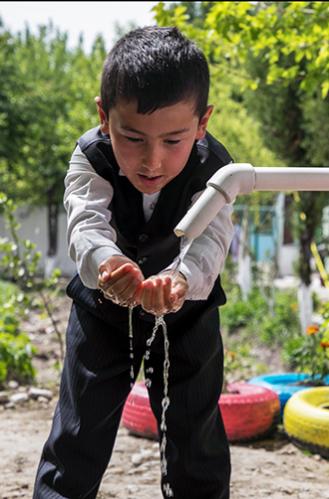
5.2
billions
71% of the global population, or 5.2 billion people, had adequate access to safely managed drinking water in 2015, but 844 million people still did not have access to drinking water.
2.9
billions
39% of the global population, or 2.9 billion people, had access to safe sanitation in 2015, but 2.3 billion still lacked access to basic sanitation. 892 million people defecated in the open.
80
%
80% of wastewater was discharged into waterways without proper treatment.
SDG Goal Targets:
- By 2030, achieve universal and equitable access to safe and affordable drinking water for all.
- By 2030, achieve access to adequate and equitable sanitation and hygiene for all and end open defecation, paying special attention to the needs of women and girls and those in vulnerable situations.
- By 2030, improve water quality by reducing pollution, eliminating dumping and minimizing the release of hazardous chemicals and materials, halving the proportion of untreated wastewater and substantially increasing recycling and safe reuse worldwide.
- By 2030, substantially increase water-use efficiency across all sectors and ensure sustainable withdrawals and supply of freshwater to address water scarcity and substantially reduce the number of people suffering from water scarcity.
- By 2030, implement integrated water resources management at all levels, including through transboundary cooperation as appropriate.
- By 2020, protect and restore water-related ecosystems, including mountains, forests, wetlands, rivers, aquifers and lakes.
- By 2030, expand international cooperation and capacity-building support to developing countries in water-related activities and programs, including water harvesting, desalination, water efficiency, wastewater treatment, recycling, and reuse technologies.
- Support and strengthen the participation of local communities in improving water management and sanitation.
Goal 7
Affordable and clean energy
Between 2000 and 2018, the percentage of people with access to electricity increased from 78% to 90% worldwide, and the number of people without access to electricity fell to 789 million.
However, as the population continues to grow, so does the demand for cheap energy, and an economy dependent on fossil fuels is creating drastic changes in our climate.
Investing in solar, wind, and thermal energy, improving energy productivity, and ensuring energy for all is vital to achieving SDG 7 by 2030.
Expanding infrastructure and upgrading technology to provide clean and more efficient energy in all countries will encourage growth and help the environment.
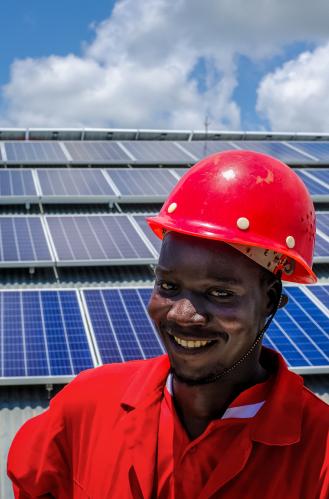
10
%
One in 10 people worldwide still do not have access to electricity, most of them in rural areas of developing countries. More than half are in sub-Saharan Africa.
73
%
Energy is by far the biggest cause of global climate change, accounting for 73% of human-induced greenhouse gas emissions.
40
%
Energy efficiency is essential; appropriate energy efficiency policies could enable the world to achieve more than 40% of the emissions cuts needed to meet climate targets without the use of new technologies.
Metas do ODS
By 2030, ensure universal access to affordable, reliable, and modern energy services.
By 2030, substantially increase the share of renewable energy in the global energy mix.
By 2030, double the global rate of improvement in energy efficiency.
By 2030, strengthen international cooperation to facilitate access to clean energy research and technology, including renewable energy, energy efficiency and advanced and clean fossil fuel technology, and promote investment in energy infrastructure and clean energy technology.
By 2030, expand infrastructure and upgrade technology to provide modern and sustainable energy services to all developing countries, in particular least developed countries, small island developing States, and landlocked developing countries.
SDG in Action
Goal 8
Decent Work and Economic Growth
Nos últimos 25 anos, o número de trabalhadores que vivem em extrema pobreza diminuiu drasticamente, apesar do impacto duradouro da crise econômica de 2008 e da recessão global. Nos países em desenvolvimento, a classe média agora representa mais de 34% do emprego total – um número que quase triplicou entre 1991 e 2015.
No entanto, à medida que a economia global continua a se recuperar, vemos um crescimento mais lento, desigualdades cada vez maiores e empregos insuficientes para acompanhar uma força de trabalho crescente. Segundo a Organização Internacional do Trabalho (OIT), mais de 204 milhões de pessoas estavam desempregadas em 2015.
Os ODS promovem o crescimento econômico sustentado, maiores níveis de produtividade e inovação tecnológica. Incentivar o empreendedorismo e a criação de empregos são fundamentais para isso, assim como medidas eficazes para erradicar o trabalho forçado, a escravidão e o tráfico de pessoas. Com essas metas em mente, o objetivo é alcançar emprego pleno e produtivo e trabalho decente para todas as mulheres e homens até 2030.
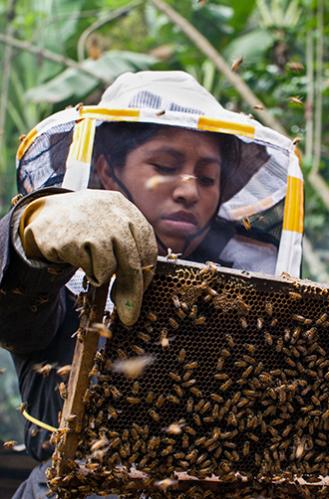
5
%
It is estimated that 172 million people were unemployed worldwide in 2018 – an unemployment rate of 5%.
1
million
As a result of the expansion of the workforce, the number of unemployed people is expected to increase by 1 million each year and reach 174 million by 2020.
700
millions
Around 700 million workers lived in extreme and moderate poverty in 2018, living on less than US$3.20 per day.
Goal targets
- Sustain per capita economic growth in accordance with national circumstances and, in particular, achieve at least 7% growth in gross domestic product (GDP) per year in the least developed countries.
- Achieve higher levels of economic productivity through diversification, technological upgrading, and innovation, including by focusing on high value-added and labor-intensive sectors.
- Promote development-oriented policies that support productive activities, decent job creation, entrepreneurship, creativity, and innovation, and encourage the formalization and growth of micro, small, and medium-sized enterprises, including through access to financial services.
- Progressively improve resource efficiency in consumption and production and decouple economic growth from environmental degradation by 2030, in accordance with a 10-year program on sustainable consumption and production, with developed countries taking the lead.
- By 2030, achieve full and productive employment and decent work for all women and men, including for young people and persons with disabilities, and equal pay for work of equal value.
- By 2020, substantially reduce the proportion of youth not in employment, education, or training.
- Take immediate and effective measures to eradicate forced labor, end modern slavery and human trafficking, and secure the prohibition and elimination of the worst forms of child labor, including recruitment and use of child soldiers, and by 2025 end child labor in all its forms.
- Protect labor rights and promote safe and secure working environments for all workers, including migrant workers, in particular migrant women, and those in precarious employment.
- By 2030, develop and implement policies to promote sustainable tourism that creates jobs and promotes local culture and products.
- Strengthen the capacity of national financial institutions to encourage and expand access to safe banking and financial services for all.
- Increase aid for trade for developing countries, in particular least developed countries, including through the Enhanced Integrated Framework for Trade-Related Technical Assistance to Least Developed Countries.
By 2020, develop and operationalize a global strategy for youth employment and implement the International Labor Organization's Global Jobs Pact.
SDG in Action
Goal 9
Industry, Innovation and Infrastructure
Investment in infrastructure and innovation is an essential driver of economic growth and development. With more than half of the world's population now living in cities, mass transportation and renewable energy are becoming increasingly important, as is the growth of new industries and information and communication technologies.
Technological progress is also key to finding lasting solutions to economic and environmental challenges, such as creating new jobs and promoting energy efficiency. Promoting sustainable industries and investing in scientific research and innovation are important ways to facilitate sustainable development.
More than 4 billion people still do not have access to the Internet, and 90% of them are in developing countries. Bridging this digital divide is crucial to ensuring equal access to information and knowledge, as well as fostering innovation and entrepreneurship.
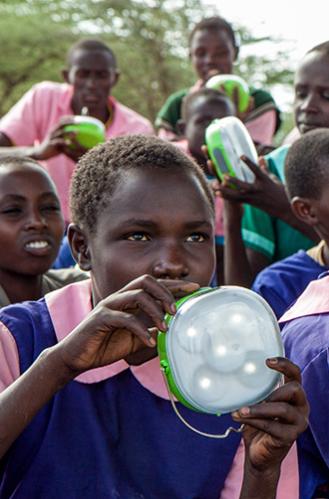
2.3
billions
2.3 billion people worldwide lack access to basic sanitation
40
%
In some low-income African countries, infrastructure bottlenecks reduce business productivity by around 40%.
2.6
billions
2.6 billion people in developing countries do not have access to reliable electricity
SDG Goal Targets
- Develop quality, reliable, sustainable, and resilient infrastructure, including regional and cross-border infrastructure, to support economic development and human well-being, with a focus on equitable and affordable access for all.
- Promote inclusive and sustainable industrialization and, by 2030, significantly increase industry's share of employment and gross domestic product (GDP), in accordance with national circumstances, and double the share of industry in the GDP of the least developed countries.
- Increase access by small industrial and other enterprises, particularly in developing countries, to financial services, including affordable credit, and their integration into value chains and markets.
- By 2030, upgrade infrastructure and modernize industries to make them sustainable, with greater resource efficiency and increased adoption of clean and environmentally sound industrial technologies and processes, with each country acting in accordance with its capabilities.
- By 2030, enhance scientific research, upgrade the technological capabilities of industrial sectors in all countries, particularly in developing countries, by encouraging innovation and substantially increasing the number of research and development workers by 1 million people and increasing public and private spending on research and development.
- Facilitate the development of sustainable and resilient infrastructure in developing countries through increased financial, technological, and technical support to African countries, least developed countries, landlocked developing countries, and small island developing states.
- Support the development of domestic technology, research, and innovation in developing countries, including by ensuring a policy environment conducive to industrial diversification and value addition to raw materials.
- Significantly increase access to information and communication technologies and promote universal and affordable access to the Internet in least developed countries by 2020.
Goal 10
Reduced Inequalities
Income inequality is increasing—the richest 10% hold up to 40% of global income, while the poorest 10% earn only between 2% and 7%. If we take into account the inequality of population growth in developing countries, inequality has increased by 11%.
Income inequality has increased almost everywhere in recent decades, but at different rates. The increase was smaller in Europe and greater in the Middle East.
These growing disparities require sound policies to empower low-income people and promote economic inclusion for all, regardless of gender, race, or ethnicity.
Income inequality requires global solutions. This involves improving the regulation and monitoring of financial markets and institutions, encouraging development assistance and foreign direct investment in regions where it is most needed. Facilitating safe migration and the mobility of people is also key to reducing the ever-widening gap.

22
%
In 2016, 22% of global wealth was received by the richest 1%, while 10% of income went to the poorest 50%.
16
%
In 1980, the richest 1% had 16% of global income. The poorest 50% had 8%.
33
%
Economic inequality is largely driven by the unequal distribution of capital. Since 1980, there have been large transfers of public wealth to the private sector in almost every country. In 2016, the richest 1% held 33% of global wealth.
SDG Goal targets
- By 2030, progressively achieve and sustain income growth for the poorest 40% of the population at a rate higher than the national average.
- By 2030, empower and promote the social, economic, and political inclusion of all, irrespective of age, sex, disability, race, ethnicity, origin, religion, or economic status or other factors.
- Ensure equal opportunity and reduce multidimensional inequalities, including by eliminating discriminatory laws, policies, and practices and promoting appropriate legislation, policies, and actions in this regard.
- Adopt policies, especially fiscal, wage, and social protection policies, and progressively achieve greater equality.
- Improve the regulation and monitoring of global financial markets and institutions and strengthen the implementation of such regulations.
- Ensure greater representation and voice for developing countries in the decision-making of international economic and financial institutions in order to ensure more effective, reliable, accountable, and legitimate institutions.
- Facilitate the migration and mobility of people in an orderly, safe, regular, and responsible manner, including through the implementation of planned and well-managed migration policies.
- Implement the principle of special and differential treatment for developing countries, in particular least developed countries, in accordance with World Trade Organization (WTO) agreements.
- Encourage official development assistance and financial flows, including foreign direct investment, to States where the need is greatest, in particular least developed countries, African countries, small island developing States, and landlocked developing countries, in accordance with their national plans and programs.
- By 2030, reduce transaction costs on remittances to less than 3% and eliminate remittance flows with costs above 5%.
SDG in Action
Objetivo 11
Sustainable Cities and Communities
More than half of the global population lives in cities. By 2050, two-thirds of all humanity—6.5 billion people—will live in urban settings. Sustainable development cannot be achieved without significantly transforming the way we build and manage our urban spaces.
The rapid growth of cities—the result of population growth and increasing migration—has led to a boom in megacities, especially in the developing world, and slums are becoming a feature of urban life.
Making cities sustainable means creating career and business opportunities, safe and affordable housing, and building resilient societies and economies. It involves investing in public transportation, creating green public spaces, and improving urban planning and management in a participatory and inclusive manner.
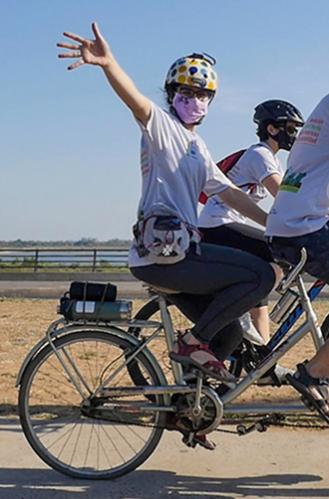
4.2
billion
In 2018, 4.2 billion people, 55% of the global population, lived in cities. By 2050, the urban population is expected to reach 6.5 billion people.
3
%
Cities occupy only 3% of the Earth's surface, but account for 60% to 80% of energy consumption and at least 70% of CO2 emissions.
828
millions
An estimated 828 million people live in slums worldwide, and this number is increasing.
Metas do ODS
- Até 2030, garantir o acesso de todos a moradias e serviços básicos adequados, seguros e acessíveis e melhorar os bairros periféricos e favelas.
- Até 2030, garantir acesso a sistemas de transporte seguros, acessíveis e sustentáveis para todos, melhorando a segurança viária, notadamente por meio da expansão do transporte público, com atenção especial às necessidades das pessoas em situação de vulnerabilidade, mulheres, crianças, pessoas com deficiência e idosos.
- Até 2030, melhorar a urbanização inclusiva e sustentável e a capacidade de planejamento e gestão participativa, integrada e sustentável de assentamentos humanos em todos os países.
- Fortalecer os esforços para proteger e salvaguardar o patrimônio cultural e natural do mundo.
- Até 2030, reduzir significativamente o número de mortes, de pessoas afetadas e de perdas econômicas causadas por desastres, incluindo desastres relacionados à água, com foco na proteção dos mais pobres e das pessoas em situação de vulnerabilidade.
- Até 2030, reduzir o impacto ambiental per capita adverso das cidades, inclusive prestando atenção especial à qualidade do ar e à gestão de resíduos municipais e outros.
- Até 2030, garantir acesso universal a espaços verdes públicos, seguros, inclusivos e acessíveis, em particular para mulheres e crianças, idosos e pessoas com deficiência.
- Apoiar vínculos econômicos, sociais e ambientais positivos entre áreas urbanas, periurbanas e rurais, fortalecendo o planejamento do desenvolvimento nacional e regional.
- Até 2020, aumentar consideravelmente o número de cidades e assentamentos humanos que adotam e implementam políticas e planos integrados para promover a inclusão, o uso eficiente de recursos, a mitigação da mudança global do clima e a adaptação à resistência aos desastres, ao desenvolver e colocar na prática, em consonância com o Marco de Sendai para a Redução do Risco de Desastres 2015-2030, a gestão integral dos riscos de desastres em todos os níveis.
- Apoiar os países menos desenvolvidos, inclusive por meio de assistência técnica e financeira, na construção de edifícios sustentáveis e resilientes utilizando materiais locais.
Goal 12
Responsible Consumption and Production
Achieving economic growth and sustainable development requires that we urgently reduce our ecological footprint by changing the way we produce and consume goods and resources. Agriculture is the largest consumer of water worldwide, and irrigation now accounts for about 70% of all freshwater used by humans.
More efficient management of our shared natural resources and the disposal of toxic and polluting waste is important to achieving this goal. Encouraging industries, businesses, and consumers to recycle and reduce waste is equally important, as is supporting developing countries in adopting more sustainable consumption patterns by 2030.
A large part of the world's population is still consuming too little to meet their basic needs. In this context, global per capita food waste at the retail and consumer levels must be halved to create more efficient production and supply chains. This can help with food security and contribute to an economy that uses resources efficiently.
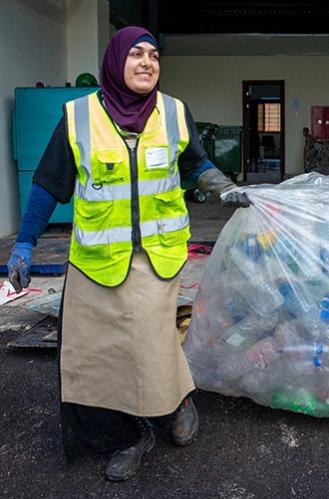
1.3
billion
1.3 billion tons of food is wasted every year, while nearly 2 billion people go hungry or are malnourished.
22
%
The food sector accounts for about 22% of total greenhouse gas emissions, mainly due to the conversion of forests into arable land.
2
billion
Globally, 2 billion people are obese or overweight.
Metas do ODS
- Implement a 10-year plan on sustainable consumption and production, with action by all countries and leadership by developed countries, taking into account the capacities of developing countries.
- By 2030, achieve sustainable management and efficient use of natural resources.
- By 2030, halve per capita global food waste at the retail and consumer levels and reduce food losses along production and supply chains, including post-harvest losses.
- By 2020, achieve the environmentally sound management of chemicals and all wastes throughout their life cycle, in accordance with agreed international guidelines, and significantly reduce their release to air, water, and soil in order to minimize their adverse impacts on human health and the environment.
- By 2030, substantially reduce waste generation through prevention, reduction, recycling, and reuse.
- Encourage companies, especially large and transnational ones, to adopt sustainable practices and integrate sustainability information into their reporting.
- Promote sustainable public procurement practices, in accordance with national policies and priorities.
- By 2030, ensure that people everywhere have relevant information and awareness for sustainable development and lifestyles in harmony with nature.
- Support developing countries in strengthening their scientific and technological capacity to move towards more sustainable patterns of consumption and production.
- Develop and implement tools to monitor the impacts of sustainable development for sustainable tourism that creates jobs and promotes local culture and products.
- Rationalize inefficient fossil fuel subsidies that encourage wasteful consumption, removing market distortions, in accordance with national circumstances. Restructure taxation and phase out such harmful subsidies, where they exist, to reflect their environmental impacts, taking fully into account the specific needs and conditions of developing countries and minimizing the possible adverse impacts on their development in a manner that protects the poor and affected communities.
Goal 13
Climate action
There is no country that is not experiencing the drastic effects of global climate change. Greenhouse gas emissions have risen 50% compared to 1990. Global warming is causing lasting changes to our climate system, which will have irreversible consequences if no action is taken.
The average annual economic losses from climate-related disasters are in the hundreds of billions of dollars. Not to mention the human impact of geophysical disasters, 91% of which are climate-related and which, between 1998 and 2017, killed 1.3 million people and left 4.4 billion injured. The SDG aims to mobilize US$100 billion annually by 2020 to meet the needs of developing countries to adapt to global climate change and invest in low-carbon development.
Supporting vulnerable regions will directly contribute not only to SDG 13, but also to the other SDGs. These actions must also be accompanied by efforts to integrate disaster risk measures, sustainable natural resource management, and human security into national development strategies. With strong political will, it is still possible to expand investment and the use of existing technologies, limit the increase in global average temperature to 2°C above pre-industrial levels, aiming for 1.5°C, but this requires urgent and ambitious collective action.
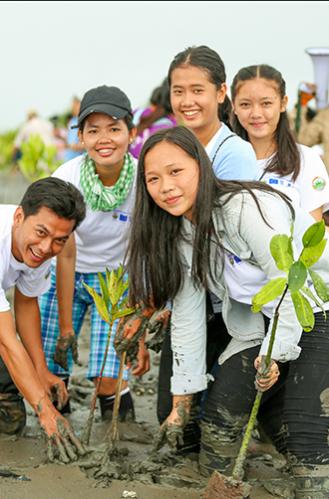
+1°
Celsius
By 2017, it is estimated that human activity will have caused a 1°C increase in global temperatures above pre-industrial levels.
+20
cm
Sea levels have risen by about 20 centimeters since 1880 and are expected to rise by 30 to 122 cm by 2100.
2050
To limit global warming to 1.5°C, global net CO2 emissions must fall by 45% between 2010 and 2030, and reach neutrality by 2050.
SDG Goal Targets
- Strengthen resilience and adaptive capacity to climate-related natural hazards and disasters in all countries.
- Integrate climate action into national policies, strategies, and planning. Improve education, awareness-raising, and human and institutional capacity on climate mitigation, adaptation, impact reduction, and early warning.
- Implement the commitment made by developed countries in the United Nations Framework Convention on Climate Change to jointly mobilize US$100 billion annually by 2020 from all sources to meet the needs of developing countries in the context of meaningful mitigation actions and transparency in the implementation and full operationalization of the Green Climate Fund through its capitalization as soon as possible.
- Promote mechanisms to increase the capacity for effective planning and management of global climate change in less developed countries and small island developing states, with a focus on women, youth, and local and marginalized communities.
SDG in Action
Goal 14
Life Below Water
The world's oceans—their temperature, chemistry, currents, and life—drive global systems that make Earth habitable for humanity. How we manage this vital resource is essential for humanity as a whole and for counterbalancing the effects of global climate change.
More than 3 billion people depend on marine and coastal biodiversity for their livelihoods. However, today 30% of the world's fish stocks are being overexploited, falling below the level at which they can produce sustainable yields.
The oceans also absorb about 30% of the carbon dioxide produced by humans, and we are seeing a 26% increase in ocean acidification since the beginning of the Industrial Revolution. Marine pollution, the overwhelming majority of which comes from land-based sources, is reaching alarming levels, with an average of 13,000 pieces of plastic waste found in every square kilometer of ocean.
The SDGs aim to sustainably manage and protect marine and coastal ecosystems from pollution, as well as address the impacts of ocean acidification. Enhancing the conservation and sustainable use of ocean resources through international law will also help mitigate some of the challenges facing our oceans.

75
%
Oceans cover ¾ of the Earth's surface and represent 99% of the planet's living space by volume.
200m
The ocean is home to approximately 200,000 identified species, but the actual numbers are likely to exceed millions.
40
%
40% of the oceans are being severely affected by pollution, unsustainable fishing, loss of coastal habitats, and other human activities.
SDG Goal Targets:
- By 2025, prevent and significantly reduce marine pollution of all kinds, in particular that generated by land-based activities, including marine debris and nutrient pollution.
- By 2020, sustainably manage and protect marine and coastal ecosystems to avoid significant adverse impacts, including by strengthening their resilience, and take action for their restoration, in order to achieve healthy and productive oceans.
- Minimize and address the impacts of ocean acidification, including through enhanced scientific cooperation at all levels.
- By 2020, effectively regulate catches and end overfishing, illegal, unreported, and unregulated fishing, and destructive fishing practices. Implement science-based management plans to restore fish stocks as quickly as possible, at least to levels that can produce the maximum sustainable yield determined by their biological characteristics.
- By 2020, conserve at least 10% of coastal and marine areas, in accordance with national and international law and based on the best available scientific information.
- By 2020, prohibit certain forms of subsidies that contribute to overcapacity and overfishing, eliminate subsidies that contribute to illegal, and refrain from introducing new subsidies, recognizing that appropriate and effective special and differential treatment for developing and least developed countries should be an integral part of the World Trade Organization (WTO) fisheries subsidy negotiations.
- By 2030, increase the economic benefits that small island developing States and least developed countries derive from the sustainable use of marine resources, including through sustainable management of fisheries, aquaculture, and tourism.
- Increase scientific knowledge, develop research capacity, and transfer marine technology, taking into account the Criteria and Guidelines of the Intergovernmental Oceanographic Commission on the Transfer of Marine Technology, in order to improve the health of the oceans and increase the contribution of marine biodiversity to the development of developing countries, in particular small island developing States and least developed countries.
- Ensure access for small-scale artisanal fishers to marine resources and markets.
- Improve the conservation and sustainable use of the oceans and their resources by implementing international law as reflected in the United Nations Convention on the Law of the Sea (UNCLOS), which provides the legal framework for the conservation and sustainable use of the oceans and their resources, as recalled in paragraph 158 of the document “The Future We Want.”
Goal 15
Life on Land
Human life depends on the land as much as it does on the ocean for sustenance and survival. Plant life provides 80% of the human diet, and we rely on agriculture as an important economic resource. Forests cover 30% of the Earth's surface, provide vital habitats for millions of species and important sources of clean air and water, and are crucial in combating global climate change.
Every year, 13 million hectares of forests are lost, while persistent degradation of drylands has led to the desertification of 3.6 billion hectares, disproportionately affecting poor communities.
Although 15% of the land is protected, biodiversity is still at risk. Nearly 7,000 species of animals and plants have been traded illegally. Wildlife trafficking not only erodes biodiversity, but creates insecurity, fuels conflict, and corruption.
Urgent action must be taken to reduce the loss of natural habitats and biodiversity that are part of our common heritage and to support global food and water security, mitigation and adaptation to global climate change, and promote peace and security.

1.6
billion
About 1.6 billion people depend on forests for their livelihoods.
80
%
Forests are home to more than 80% of all terrestrial species of animals, plants, and insects.
2.6
billion
2.6 billion people depend directly on agriculture for their livelihoods
SDG Goal Targets
- By 2020, ensure the conservation, restoration, and sustainable use of terrestrial and freshwater ecosystems, in particular forests, wetlands, mountains, and drylands, in accordance with obligations under international agreements.
- By 2020, promote the implementation of sustainable management of all types of forests, halt deforestation, restore degraded forests, and substantially increase afforestation and reforestation globally.
- By 2030, combat desertification, restore degraded land and soil, including land affected by desertification, drought, and floods, and strive to achieve a land degradation-neutral world.
- By 2030, ensure the conservation of mountain ecosystems, including their biodiversity, in order to enhance their capacity to provide essential benefits for sustainable development.
- Take urgent and significant measures to reduce the degradation of natural habitats, halt the loss of biodiversity and, by 2020, protect and prevent the extinction of threatened species.
- Promote the fair and equitable sharing of the benefits arising from the use of genetic resources and promote adequate access to these resources, as internationally agreed.
- Take urgent action to end poaching and trafficking of protected species of flora and fauna and combat both the demand for and supply of illegal wildlife products.
- By 2020, introduce measures to prevent the introduction and significantly reduce the impact of invasive alien species on terrestrial and aquatic ecosystems and control or eradicate priority species.
- By 2020, integrate ecosystem and biodiversity values into national and local planning, development processes, poverty reduction strategies and financial plans.
- Mobilize and significantly increase financial resources from all sources to conserve and sustainably use biodiversity and ecosystems.
- Mobilize significant resources from all sources and at all levels to finance sustainable forest management and provide adequate incentives to developing countries to advance such management, including for conservation and reforestation.
- Increase global support for efforts to combat poaching and trafficking of protected species, including by increasing the capacity of local communities to pursue sustainable livelihood opportunities.
Goal 16
Peace, Justice and Strong Institutions
We cannot expect sustainable development without peace, stability, human rights, and effective governance based on the rule of law. However, our world is increasingly divided. Some regions enjoy peace, security, and prosperity, while others fall into seemingly endless cycles of conflict and violence. This is not inevitable and must be addressed.
Armed violence and insecurity have a destructive impact on a country's development, affecting economic growth and often having consequences that last for generations. Sexual violence, crime, exploitation, and torture also prevail where there is conflict or an absence of the rule of law, and countries must take steps to protect those most at risk.
The SDGs aim to significantly reduce all forms of violence and work with governments and communities to end conflict and insecurity. Promoting the rule of law and human rights is fundamental to this process, as is reducing the flow of illicit weapons and strengthening the participation of developing countries in global governance institutions.
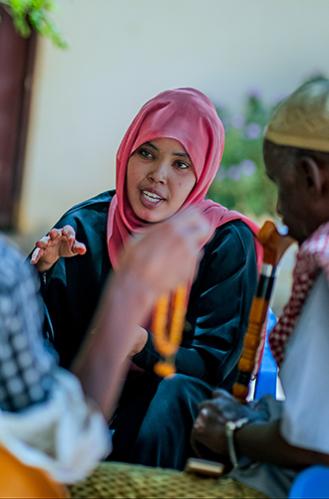
68.5
millions
In 2017, 68.5 million people were forced to flee their homes as a result of persecution, conflict, violence, or human rights violations.
10
millions
There are at least 10 million stateless people who have been denied their nationality and rights.
US$1.26
trillion
Corruption, bribery, theft, and tax evasion cost developing countries US$1.26 trillion per year.
SDG Goal Targets
- Significantly reduce all forms of violence and related death rates everywhere.
- End abuse, exploitation, trafficking, and all forms of violence and torture against children.
- Promote the rule of law at the national and international levels and ensure equal access to justice for all.
- By 2030, significantly reduce illicit financial and arms flows, strengthen the recovery and return of stolen assets, and combat all forms of organised crime.
- Substantially reduce corruption and bribery in all their forms.
- Develop effective, accountable, and transparent institutions at all levels.
- Ensure responsive, inclusive, participatory, and representative decision-making at all levels.
- Expand and strengthen the participation of developing countries in global governance institutions.
- By 2030, provide legal identity documentation for all, including birth registration.
- Ensure public access to information and protect fundamental freedoms, by national legislation and international agreements.
- Strengthen relevant national institutions, including through international cooperation, for capacity-building at all levels, in particular in developing countries, to prevent violence and combat terrorism and crime.
- Promote and enforce non-discriminatory laws and policies for sustainable development.
SDG in Action
Objetivo 17
Partnerships for the Goals
The SDGs can only be achieved through strong partnerships and global cooperation. Official development assistance remained stable but below target at US$147 billion in 2017. Meanwhile, humanitarian crises caused by conflict or natural disasters continue to demand more financial resources and aid. Many countries also need official development assistance to stimulate growth and trade.
The world is more interconnected than ever before. Improving access to technology and knowledge is an important way to share ideas and foster innovation. Coordinating policies to help developing countries manage their debt, as well as promoting investment for the least developed countries, is vital for sustainable growth and development.
The SDGs aim to improve North-South and South-South cooperation by supporting national plans to achieve all the goals. Promoting international trade and helping developing countries increase their exports is part of achieving a universal, rules-based, equitable, fair, and open trading system that benefits everyone.
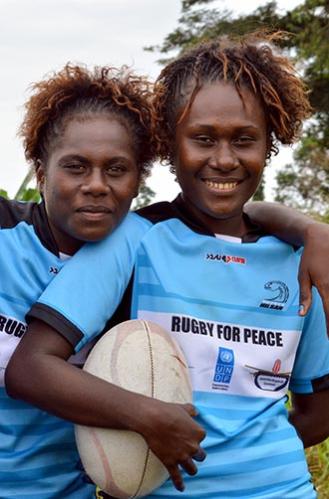
$5
trillion
The United Nations Conference on Trade and Development (UNCTAD) states that achieving the SDGs will require US$5 trillion to US$7 trillion in annual investments.
$147.2
billions
Official development assistance reached US$147.2 billion in 2017
$613
billions
In 2017, international remittances totaled US$613 billion, with 76% going to developing countries.
Goal targets
Finance
- Strengthen domestic resource mobilization, including through international support to developing countries, to improve domestic capacity for tax collection and other revenue.
- Developed countries should fully implement their official development assistance commitments, including the commitment by many developed countries to achieve the target of allocating 0.7% of Gross National Income (GNI) to developing countries and 0.15% to 0.20% of GNI to least developed countries. Official development assistance providers are encouraged to consider setting a target to allocate at least 0.20% of GNI to official development assistance for least developed countries.
Mobilize additional financial resources from various sources for developing countries.
- Help developing countries achieve long-term debt sustainability through coordinated policies aimed at promoting debt financing, debt relief, and debt restructuring, as appropriate, and address the external debt of heavily indebted poor countries to reduce over-indebtedness.
- Adopt and implement investment promotion regimes for least developed countries.
Technology
- Enhance North-South, South-South, and triangular regional and international cooperation and access to science, technology, and innovation, and enhance knowledge sharing on mutually agreed terms, including through better coordination among existing mechanisms, particularly at the United Nations level, and through a global technology facilitation mechanism.
- Promote the development, transfer, dissemination, and diffusion of environmentally sound technologies on favorable terms for developing countries, including on concessional and preferential terms, as mutually agreed.
- Fully operationalize the technology bank and the science, technology, and innovation capacity-building mechanism for least developed countries by 2017 and enhance the use of enabling technology, in particular information and communication technologies.
Capacity-building
- Increase international support for the implementation of effective and targeted capacity building for developing countries to support national plans to implement all SDGs, including through North-South, South-South, and triangular cooperation.
Trade
- Promote a universal, rules-based, open, non-discriminatory, and equitable multilateral trading system under the World Trade Organization (WTO), including through the conclusion of negotiations under its Doha Development Agenda.
- Significantly increase exports from developing countries, in particular with the aim of doubling the share of least developed countries in global exports by 2020.
- Achieve the timely implementation of duty-free and quota-free market access on a lasting basis for all least developed countries, in accordance with WTO decisions, including by ensuring that preferential rules of origin applicable to imports from least developed countries are transparent and simple, and contribute to facilitating market access.
Systemic issues
- Policy and institutional coherence
- Improve global macroeconomic stability, including through policy coordination and coherence.
- Improve policy coherence for sustainable development.
- Respect each country's policy space and leadership to establish and implement policies for poverty eradication and sustainable development.
Multi-stakeholder partnerships
- Enhance the global partnership for sustainable development, complemented by multisectoral partnerships that mobilize and share knowledge, expertise, technology, and financial resources, to support the achievement of sustainable development goals in all countries, in particular developing countries.
- Encourage and promote effective public, public-private, and civil society partnerships, based on the experience and resource strategies of the partnerships.
Data, monitoring, and accountability
- By 2020, increase support for capacity-building for developing countries, including least developed countries and small island developing states, to significantly increase the availability of high-quality, timely and reliable data disaggregated by income, gender, age, race, ethnicity, status, disability, geographic location and other relevant characteristics in national contexts.
- By 2030, build on existing initiatives to develop measurements of progress on sustainable development that complement Gross Domestic Product (GDP) and support statistical capacities in developing countries.

 Locations
Locations























